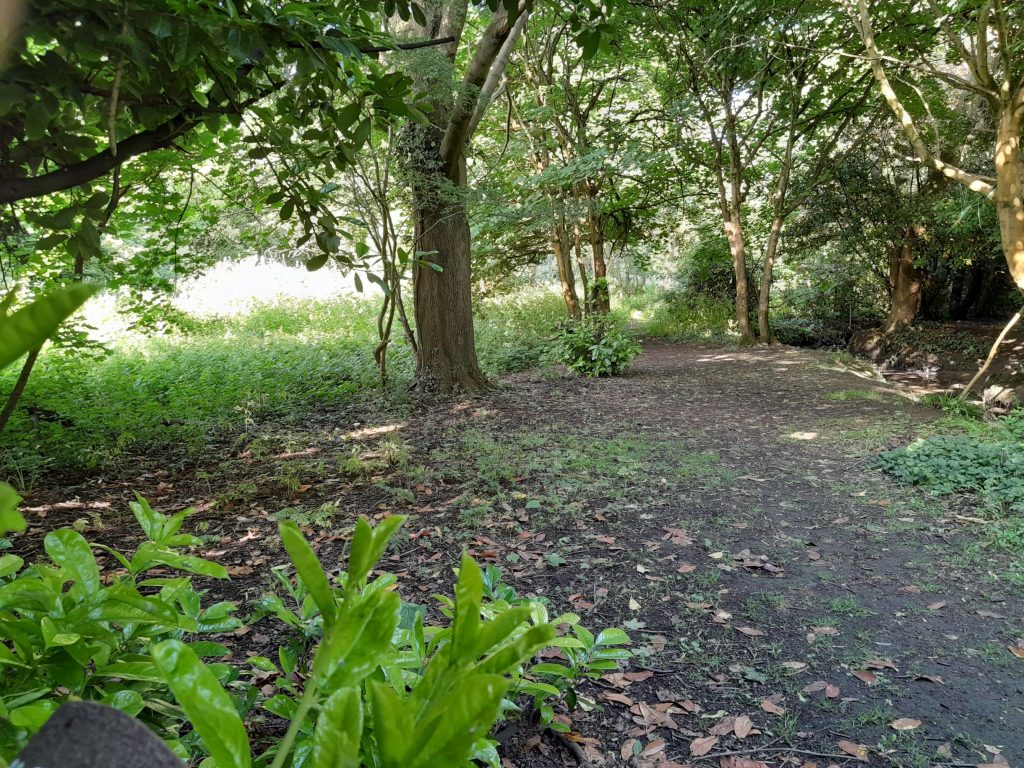The Nature Walk
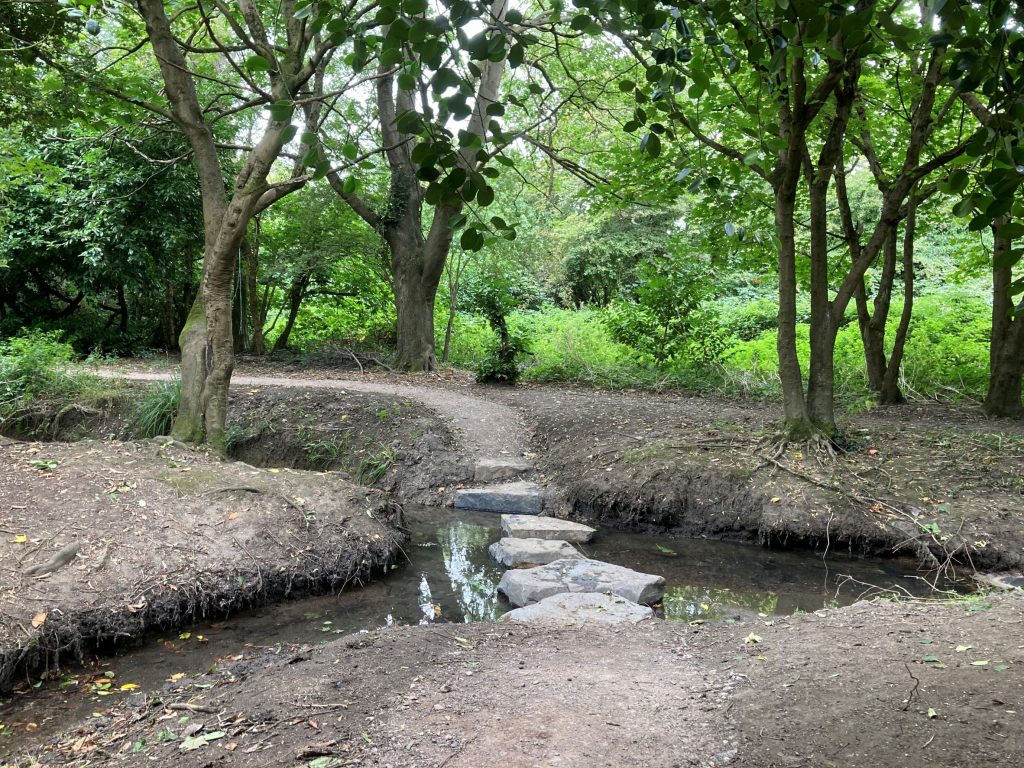
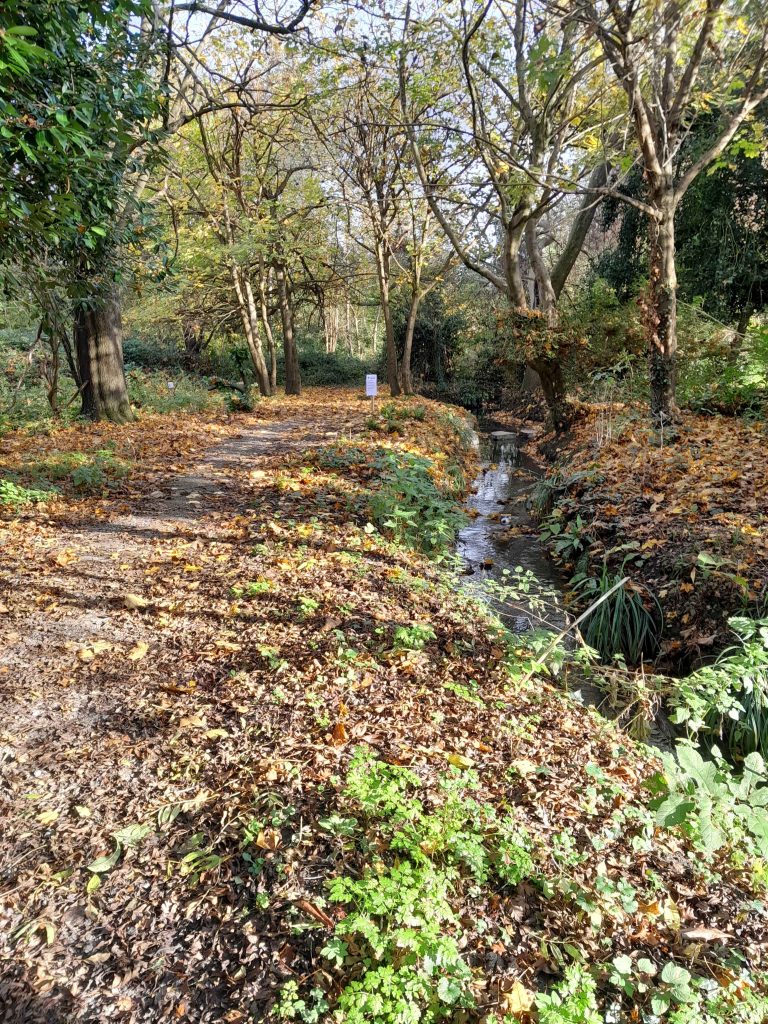
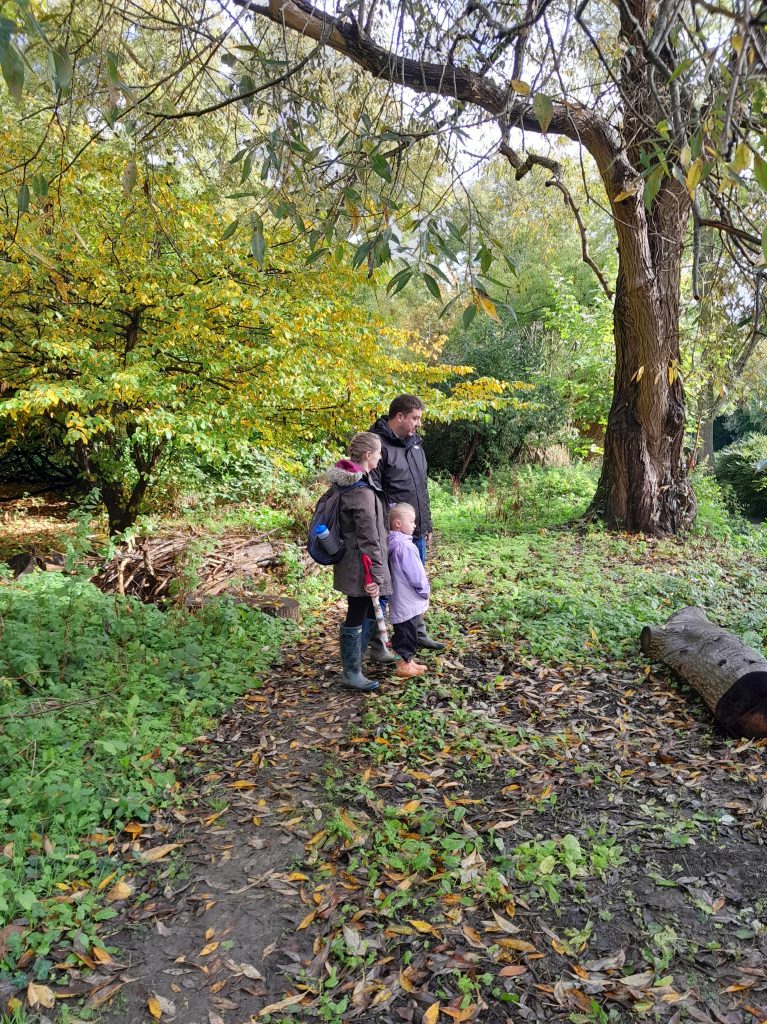
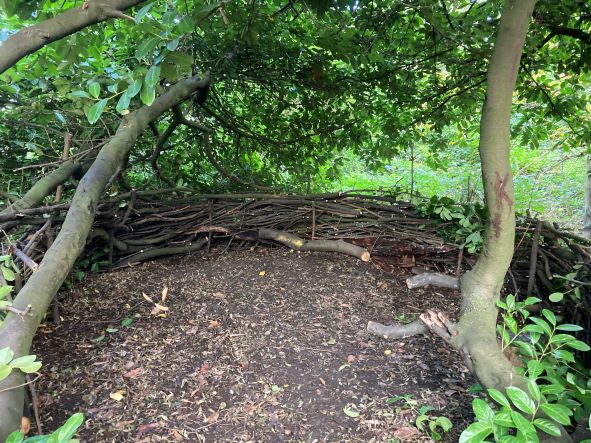
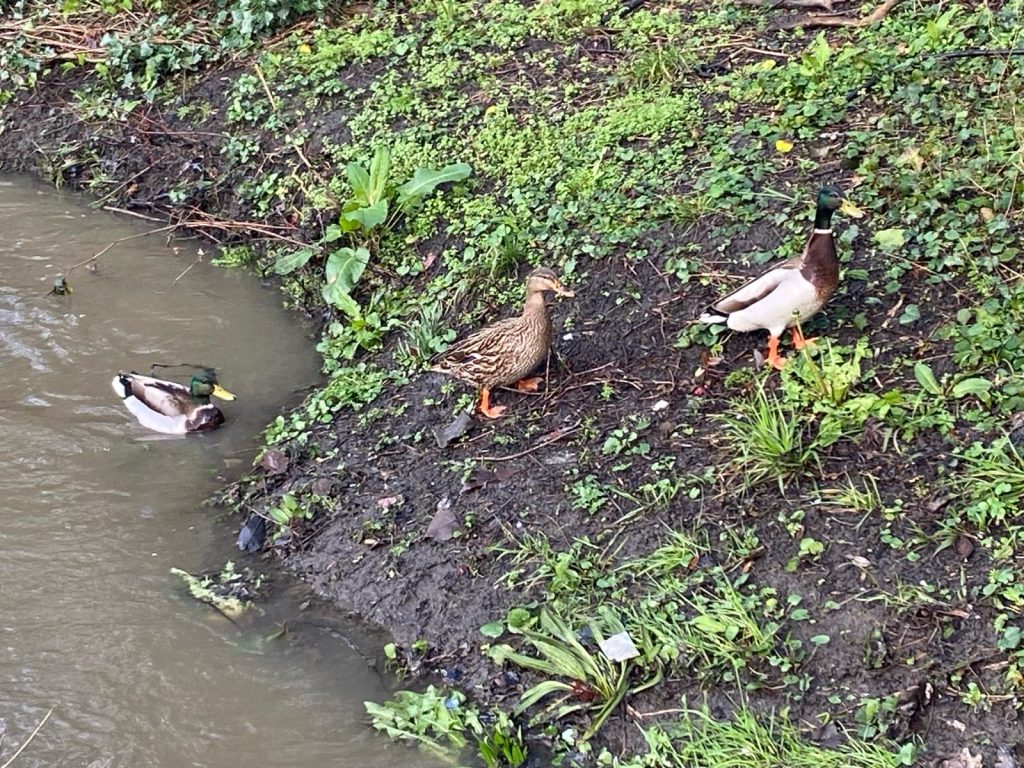
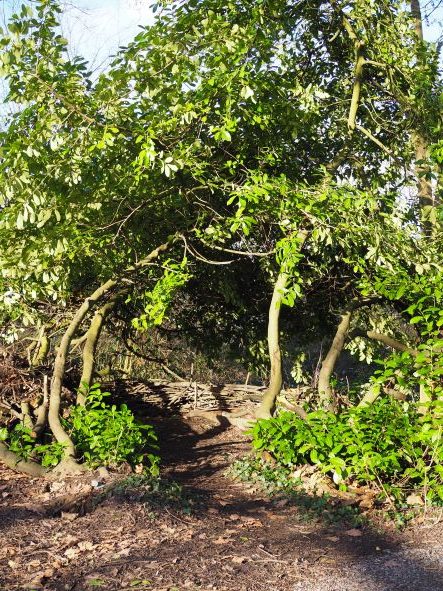
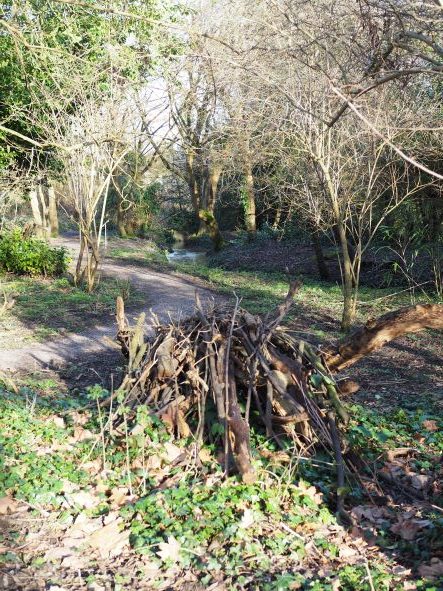
Forty years ago, park visitors were able to walk along both sides of Yeading Brook. There was an open field where dog walkers could exercise their pets and children play in between the Lincoln Road allotment and the stream. Over time, vegetation slowly took over and it became impossible to walk along the stream, apart from a small overgrown stretch from the main wooden bridge towards the back of the island. This area was secluded and heavily overshadowed by trees, so that few people either knew about it or chose to walk there.
Wild spaces are important both for wildlife and for people and it is possible to respectfully share them. The creation of the ‘Nature Walk’ rests on this belief. The concept involved clearing a narrow trail along the right bank of the stream, from the main crossroads bridge towards Northumberland Road, where the bank becomes too steep and narrow for safe passage.
During late 2020, the Friends began to clear overgrown nettles and brambles at the entrance to the proposed Nature Walk and daffodils were planted along the bank. Some of the bamboo and dense cherry laurel was trimmed back to let in light and visibility for walkers. Woodpiles were left as habitat for insects and small creatures. During the winter months, Friends volunteers cleared a path through the undergrowth, hugging the stream, while leaving the ‘wild’ area of brambles, nettles and undergrowth intact. The boundaries of the path are lined with logs in many places and the path kept clear of nettles.
Over the other side of the path to Lincoln Road, a further stretch of the ‘Nature Walk’ runs from the lower corner of the sports field, along the river bank to the wooded area. In the spring, the banks of the stream are covered with the star-shaped yellow flowers of Lesser Celandine, a perennial herb from the buttercup family.
The Nature Walk offers a peaceful retreat for birdwatchers, a place to watch the egret hunting in the stream, squirrels chasing each other through the trees, spot a fox lazing in the sun and a chance for young children to climb in the low cherry laurel branches and create their own adventures. There are wildflowers – clover, creeping thistles, yarrow, white-flowered dead-nettle (which doesn’t sting), cuckoo flowers and a variety of grasses. And when shadows lengthen, dusk falls and the bats emerge to hunt, then it’s time for home and the Nature Trail belongs to the wild again.
